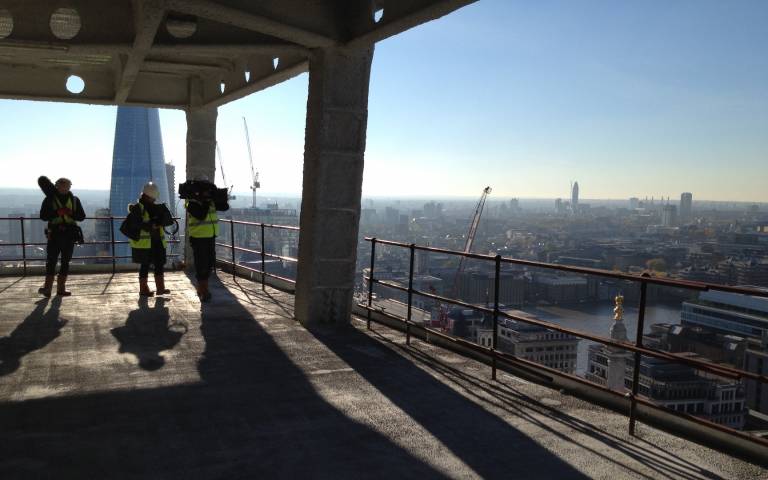 Research
Research

Visions of Britain: Television, the city and its architecture
First and second supervisors
Abstract
This research looks at the ways in which the medium of television has helped produce what we understand about urban landscapes and architecture.
When Tom was a child, long before he knew the words “architecture” or “urbanism”, like billions of others he discovered worlds beyond the one he lived in through the television set. He watched, from his sofa, American sitcoms, with opening credits of exotic skyscrapers and sidewalks. He watched “real life” soap operas set in English stately homes or dense terraced streets. He watched documentary series with earnest men (they were almost always men) staring from the screen, telling him about science, art, planets, nature – and architecture. Tom's research examines these landscapes in our living rooms.
It focuses on the UK, with its unique culture of public service and commercial broadcasting, from 1946 (when television transmission resumed after the second world war) to the advent of streaming, which is arguably altering the nature of television broadcasting.
The arrival of television as a mass medium stimulated new ideas and theories about its influence, and transformations in how we understand visual culture, in ways that anticipate more recent shifts prompted by the birth of the internet and digital culture.
This new form of global communication mediated the world on a scale and with a reach never before experienced. It allowed perspectives on infinite topics, new voices to be heard, new opinions to be broadcast, new images to be created and seen. It created strange kinds of spatial experience, blurring inside and outside, the domestic and the public, the familiar and the alien, the physical and the virtual – kinds that have become commonplace today.
This research explores, among other subjects: how television constructs a “public sphere” in which ideas about architecture, space and the city are constructed, contested and “made public”; a critical history of architecture and urbanism on television; the narratives and criticism of cities and architecture created through television; how the television camera and set act as devices for looking; how history and techniques of the medium intersect with theories and histories of culture, politics, architecture and technology.
Biography
Tom Dyckhoff is a historian, writer and broadcaster about architecture, geographies and cities, and teaches urban and architectural history and theory at The Bartlett, UCL and at Central Saint Martins, University of the Arts. He has written and presented many TV and radio/podcast series on the subjects for the BBC, Channel 4, Netflix, Sky and others, and was previously exhibitions curator at the Royal Institute of British Architects, homes editor at The Guardian and architecture and design critic at The Times. His latest book is The Age of Spectacle: the rise and fall of iconic architecture (Windmill Books: 2017).
Publications
The Age of Spectacle: the rise and fall of iconic architecture (London: Windmill, 2017).
The Architecture of London 2012: Vision, Design, Legacy, the official guide to the architecture of the Olympic Games (London: John Wiley & Sons, 2012). Co-author with Claire Barrett.
‘Higher and higher: how London bought the loft’, in Joe Kerr and Andrew Gibson (eds), London after Punk (London: Reaktion Books, 2003, 2013; first and second edition).
‘The Authentic Landscape: architecture and citizenship in British architecture 1945-1951’ in Vittorio Lampugnani, Jöran Lindvall and Vladimir Slapeta (eds), Die Architektur, die Tradition und der Ort: Regionalismen in der europäischen Stadt (Stuttgart: Deutsche Verlags-Anstalt (DVA), 2000).
More information
Image: Tom Dyckhoff
 Close
Close

